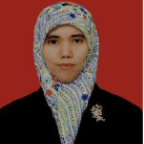International Journal of Engineering and Manufacturing (IJEM)
IJEM Vol. 14, No. 5, 8 Oct. 2024
Cover page and Table of Contents: PDF (size: 738KB)
Project Based Learning of Free-Falling Objects in Physics: Microcontroller-Based Multi-Sensor Test in Granular Flow Rate Measurement
PDF (738KB), PP.1-13
Views: 0 Downloads: 0
Author(s)
Index Terms
project learning, flow rate, free fall object, granule, physics, sensors integration
Abstract
The understanding of learning materials by students is the primary goal of education. However, this is not easily achieved by students. Teachers must make various innovations so that students can easily grasp the learning materials. Free-falling objects are one of the main topics in physics. Learning materials can be delivered through project-based activities in the classroom. Through class projects, empirical research can be conducted by both students and teachers. This article presents the tools and testing results related to the motion of granular materials as project-based learning. The flow rate of granular material in this project will illustrate the relationship between distance and time in free-fall motion. Therefore, this research designs and constructs a granular flow rate measurement system based on multiple sensors and a microcontroller to demonstrate the concept of free-falling objects through project-based learning. The method used is the design and construction of a device consisting of electronic and mechanical systems. The granular motion will be detected by the sensors. The main part of the electronic system consists of a microcontroller and five infrared sensors, which include five transmitters and five receivers. The mechanical system consists of a granular holding platform. Several types of granular materials are used for testing the flow rate measurement system. The lowest flow rate among the tested granular materials is around 70 grams/s for basil seeds, and the highest flow rate is for colorstone, with a flow rate of around 200 grams/s. The results also align with the basic physics concept of freefalling objects, which states that velocity increases as they approach the earth's surface due to the influence of gravity and distance. With the results obtained, this project-based learning device can be used to validate existing theoretical concepts.
Cite This Paper
Riska Ekawita, Nori Wirahmi, Elfi Yuliza, "Project Based Learning of Free-Falling Objects in Physics: Microcontroller-Based Multi-Sensor Test in Granular Flow Rate Measurement", International Journal of Engineering and Manufacturing (IJEM), Vol.14, No.5, pp. 1-13, 2024. DOI:10.5815/ijem.2024.05.01
Reference
[1]S. Alemneh and G. Gebrie, “The role of project-based learning in improving the writing ability and sub- writing abilities of 10th grade Amharic speaking students.,” Soc. Sci. Humanit. Open, vol. 9, no. February, 2024, doi: 10.1016/j.ssaho.2024.100843.
[2]X. Y. Wu, “Unveiling the dynamics of self-regulated learning in project-based learning environments,” Heliyon, vol. 10, no. 5, 2024, doi: 10.1016/j.heliyon.2024.e27335.
[3]B. Ferdiman, H. Al Akbar, M. R. Faturrahman, and F. I. Maulana, “Development of Augmented Reality Application in Physics through Newton’s Laws and Object Interaction,” Procedia Comput. Sci., vol. 227, pp. 699–708, 2023, doi: 10.1016/j.procs.2023.10.574.
[4]T. Gomez-del Rio and J. Rodriguez, “Design and assessment of a project-based learning in a laboratory for integrating knowledge and improving engineering design skills,” Educ. Chem. Eng., vol. 40, no. February, pp. 17–28, 2022, doi: 10.1016/j.ece.2022.04.002.
[5]Z. Zen, Reflianto, Syamsuar, and F. Ariani, “Academic achievement: the effect of project-based online learning method and student engagement,” Heliyon, vol. 8, no. 11, 2022, doi: 10.1016/j.heliyon.2022.e11509.
[6]C. Marnewick, “Student experiences of project-based learning in agile project management education,” Proj. Leadersh. Soc., vol. 4, no. August, 2023, doi: 10.1016/j.plas.2023.100096.
[7]Z. Che-Aron and W. Matcha, “Project-Based Learning with Gallery Walk: The Association with the Learning Motivation and Achievement,” Int. J. Mod. Educ. Comput. Sci., vol. 15, no. 5, pp. 1–13, 2023, doi: 10.5815/ijmecs.2023.05.01.
[8]M. Kumar, N. Singh, J. Wadhwa, P. Singh, G. Kumar, and A. Qtaishat, “Utilizing Random Forest and XGBoost Data Mining Algorithms for Anticipating Students’ Academic Performance,” Int. J. Mod. Educ. Comput. Sci., vol. 16, no. 2, pp. 29–44, 2024, doi: 10.5815/ijmecs.2024.02.03.
[9]D. Monaco, G. K. Reynolds, P. Tajarobi, J. D. Litster, and A. D. Salman, “Modelling the effect of L/S ratio and granule moisture content on the compaction properties in continuous manufacturing,” Int. J. Pharm., vol. 633, no. October 2022, p. 122624, 2023, doi: 10.1016/j.ijpharm.2023.122624.
[10]H. M. Beakawi Al-Hashemi and O. S. Baghabra Al-Amoudi, “A review on the angle of repose of granular materials,” Powder Technol., vol. 330, pp. 397–417, 2018, doi: 10.1016/j.powtec.2018.02.003.
[11]R. Maharjan, J. C. Lee, N. A. Kim, and S. H. Jeong, “Preparation of seeded granules to improve mechanical properties and various drug loading for pharmaceutical application,” Powder Technol., vol. 392, pp. 650–660, 2021, doi: https://doi.org/10.1016/j.powtec.2021.07.049.
[12]X. Peifu et al., “The effect of granules characters on mechanical properties of press-coated tablets: A comparative study,” Int. J. Pharm., vol. 624, no. 121986, 2022, doi: https://doi.org/10.1016/j.ijpharm.2022.121986.
[13]X. Zhou, V. Razmovski-Naumovski, R. Mendoza, J. Truong, and K. Chan, “A comparative study of Salvia miltiorrhiza Radix & Rhizoma raw material and granule products using chromatographic analysis and antioxidant activity,” J. Tradit. Chinese Med. Sci., vol. 9, no. 3, pp. 311–320, 2022, doi: 10.1016/j.jtcms.2022.06.004.
[14]F. Meng, M. Pang, S. Hua, H. Liu, and L. Ma, “Experimental study on nonlinear friction behavior of granular flow lubrication,” Results Phys., vol. 38, no. February, p. 105598, 2022, doi: 10.1016/j.rinp.2022.105598.
[15]H. Ahmadian and M. Ghadiri, “Granule attrition by coupled particle impact and shearing,” Adv. Powder Technol., vol. 32, no. 1, pp. 204–210, 2021, doi: 10.1016/j.apt.2020.12.001.
[16]A. Haeri and K. Skonieczny, “Three-dimensionsal granular flow continuum modeling via material point method with hyperelastic nonlocal granular fluidity,” Comput. Methods Appl. Mech. Eng., vol. 394, p. 114904, 2022, doi: 10.1016/j.cma.2022.114904.
[17]Q. Wang and K. Kumar, “An inverse analysis of fluid flow through granular media using differentiable lattice Boltzmann method,” J. Rock Mech. Geotech. Eng., no. xxxx, 2024, doi: 10.1016/j.jrmge.2024.03.010.
[18]C. Peng, M. Bašić, B. Blagojević, J. Bašić, and W. Wu, “A Lagrangian differencing dynamics method for granular flow modeling,” Comput. Geotech., vol. 137, no. February, 2021, doi: 10.1016/j.compgeo.2021.104297.
[19]Y. Zhao, M. Liu, C. Wang, S. Matsusaka, and J. Yao, “Electrostatics of granules and granular flows : A review q,” Adv. Powder Technol., vol. 34, no. 1, p. 103895, 2023, doi: 10.1016/j.apt.2022.103895.
[20]P. Záhonyi et al., “Continuous integrated production of glucose granules with enhanced flowability and tabletability,” Int. J. Pharm., vol. 626, no. August, 2022, doi: 10.1016/j.ijpharm.2022.122197.
[21]D. Gollin, W. Brevis, E. T. Bowman, and P. Shepley, “Performance of PIV and PTV for granular flow measurements,” Granul. Matter, vol. 19, no. 3, 2017, doi: 10.1007/s10035-017-0730-9.
[22]M. Jiang, C. Liu, X. Du, R. Huang, L. Dai, and H. Yuan, “Research on continuous granular material flow detection method and sensor,” Meas. J. Int. Meas. Confed., vol. 182, no. October 2020, p. 109773, 2021, doi: 10.1016/j.measurement.2021.109773.
[23]N. Meziane, A. Bettahar, R. Choudhary, and D. G. Watson, “Measurement of granular flow in a vertical column using pulse induction (PI),” Biosyst. Eng., vol. 114, no. 2, pp. 78–85, 2013, doi: 10.1016/j.biosystemseng.2012.11.009.
[24]Y. Dong and H. Hansen, “Development and design of an affordable field scale weighing lysimeter using a microcontroller system,” Smart Agric. Technol., vol. 4, no. September 2022, p. 100147, 2023, doi: 10.1016/j.atech.2022.100147.
[25]Z. Wu and R. Yang, “A soft Lasso model for the motion of a ball falling in the non-Newtonian fluid,” Commun. Nonlinear Sci. Numer. Simul., vol. 131, no. 107829, 2024, doi: https://doi.org/10.1016/j.cnsns.2024.107829.
[26]A. Big-Alabo and J. C. Ofodu, “Theoretical investigation of the free fall of a spherical particle in a viscous fluid using continuous piecewise linearization method,” Kuwait J. Sci., vol. 51, no. 2, 2024, doi: 10.1016/j.kjs.2024.100211.
[27]S. Feldmann, T. Chatagnon, J. Adrian, J. Pettré, and A. Seyfried, “Temporal segmentation of motion propagation in response to an external impulse,” Saf. Sci., vol. 175, no. March, 2024, doi: 10.1016/j.ssci.2024.106512.
[28]S. Wang et al., “Human motion recognition by a shoes-floor triboelectric nanogenerator and its application in fall detection,” Nano Energy, vol. 108, no. 108230, 2023, doi: https://doi.org/10.1016/j.nanoen.2023.108230 Get rights and content.
[29]S. Harnsoongnoen, S. Srisai, P. Kongkeaw, and T. Rakdee, “Improved Accuracy in Determining the Acceleration Due to Gravity in Free Fall Experiments Using Smartphones and Mechanical Switches,” Appl. Sci., vol. 14, no. 6, 2024, doi: 10.3390/app14062632.
[30]J. Tian and C. Whitfield, “Effect of mass and center of gravity on vehicle speed and braking performance,” J. Emerg. Investig., vol. 4, no. March, pp. 1–7, 2021, doi: 10.59720/20-193.


